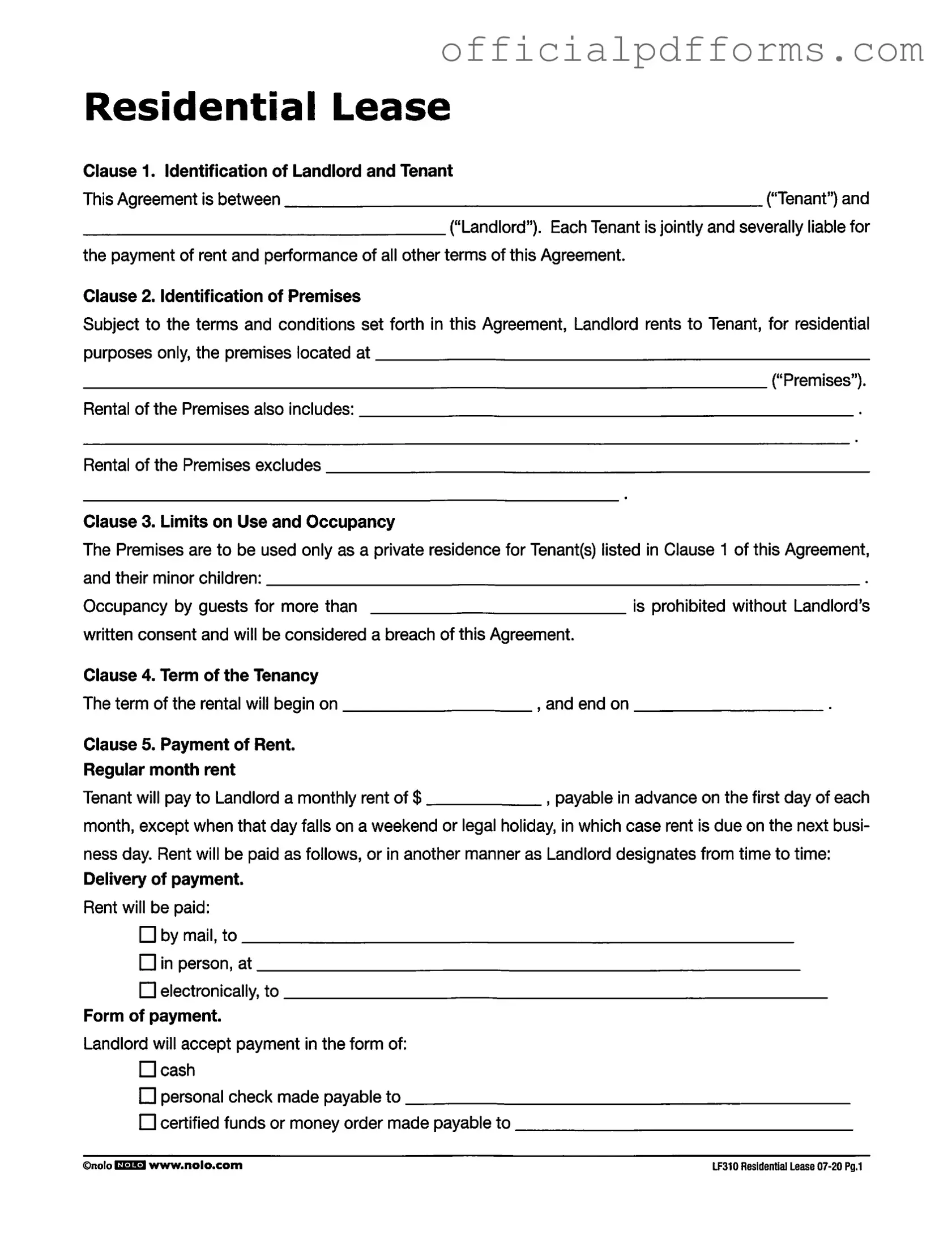Fill in a Valid Lf310 Residential Lease Form
The LF310 Residential Lease form is a legal document that outlines the agreement between a landlord and tenant regarding the rental of a residential property. It covers essential details such as payment terms, occupancy limits, and responsibilities of both parties. To ensure a smooth leasing process, fill out the form by clicking the button below.
Access Form Online
